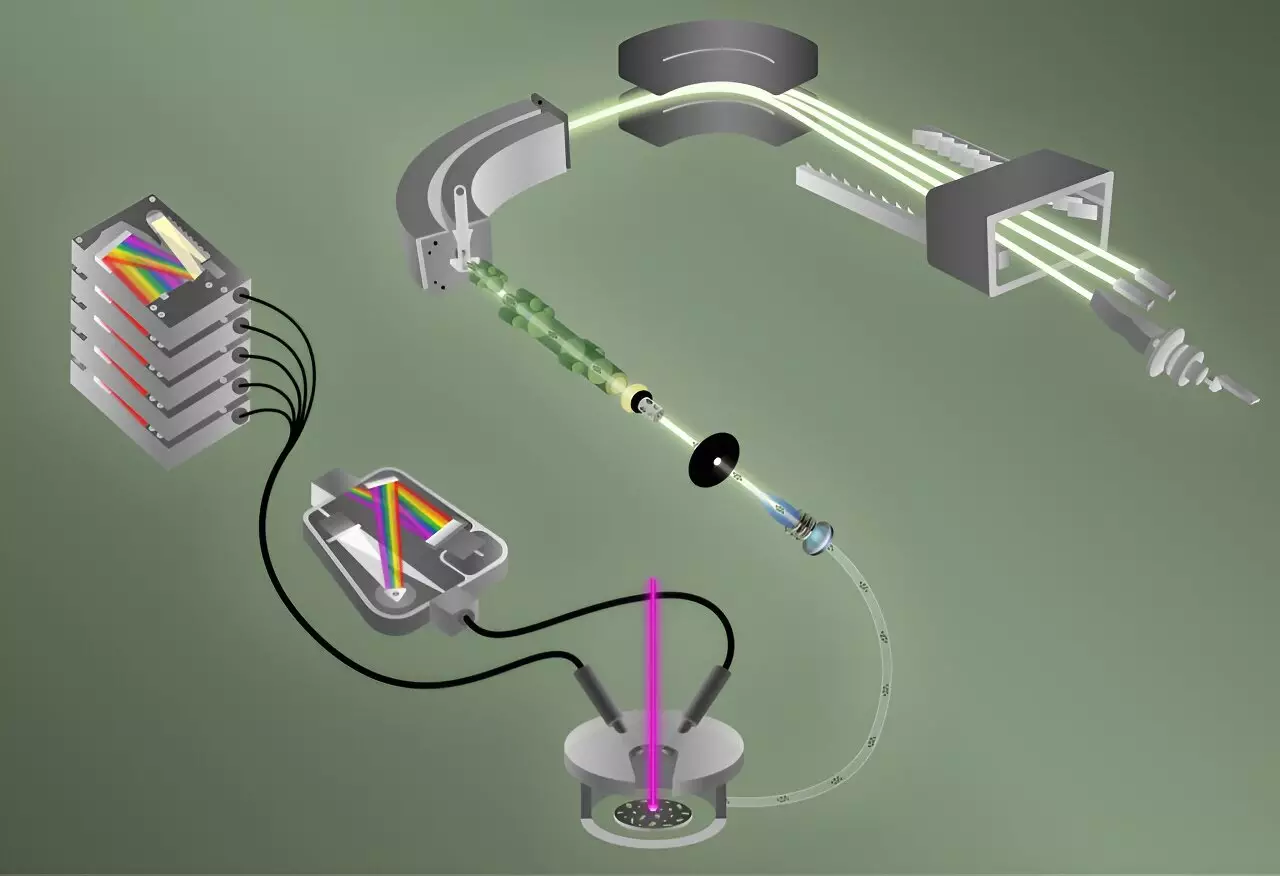In a significant leap for nuclear science, researchers at the Oak Ridge National Laboratory (ORNL) have pioneered a method that allows the simultaneous detection of fluorine and different uranium isotopes within individual particles. The ability to analyze these two crucial elements at once could greatly enhance the International Atomic Energy Agency’s (IAEA) capability in assessing nuclear materials’ purposes, specifically in contexts such as nuclear nonproliferation and material integrity assessment. This groundbreaking study published in the Journal of the American Chemical Society not only addresses important national security concerns but also opens avenues for diverse applications in fields ranging from materials science to environmental study.
Fluorine, while often overlooked, plays a pivotal role in transforming uranium into a form that is amenable to enrichment—an essential process for both energy production and potential weaponization. Detecting both fluorine and uranium isotopes within the same particle offers insights into the processes that led to their formation and can inform inspectors about their intended uses. The research centers around isolating and characterizing single particles which, although traditionally a time-consuming process, has been optimized in this study, enabling rapid analysis that could revolutionize how we approach nuclear materials.
The crux of this advancement lies in the innovative merging of two established methodologies: laser-induced breakdown spectroscopy (LIBS) and inductively coupled plasma mass spectrometry (ICP-MS). LIBS utilizes a high-energy laser to vaporize the sample, creating a plasma from which elemental information can be gauged based on the emitted light spectrum. This technique is particularly adept at quickly determining the presence of fluorine, essential for understanding the chemical makeup of the sample.
Simultaneously, the sample undergoes ICP-MS, which is employed to analyze uranium isotopes. By introducing helium gas that sweeps ions from the LIBS-produced plasma into a mass spectrometer, researchers can precisely identify uranium isotopes. The ingenuity of combining these techniques allows for a comprehensive view of material composition in a fraction of the time typically required when these analyses are performed sequentially.
Implications of the Findings
The implications of being able to detect both fluorine and uranium isotopes simultaneously cannot be overstated. As Benjamin Manard, the project lead, noted, knowing both the isotopic ratios and the elemental presence can yield valuable historical context about the sample’s origin and the processes it underwent. Brian Ticknor, another key contributor, emphasized this capability’s relevance to national security, hinting at potential applications that extend beyond purely academic realms.
Moreover, the methodological advancements herald efficiency through high-throughput analysis. Manard pointed out an aspiration to analyze thousands of particles within a single day, a far cry from the traditional slow characterization processes. As speed remains a critical consideration in scientific inquiry, the team’s focus on quick methodologies could propel various fields forward, from better nuclear material management to more robust environmental monitoring.
Broader Applications and Future Directions
The researchers at ORNL are optimistic about the broad applications of their combined techniques beyond the realm of nuclear materials analysis. Fluorine’s detection in shark teeth, explored by the team, exemplifies possible environmental applications, revealing insights about ecological conditions over time. This interdisciplinary approach suggests the potential for the methodology to contribute to biological and geological studies.
Looking to the future, the team plans to expand their investigations to include other challenging elements, particularly chlorine, which shares electronegativity properties with fluorine. This opens doors for the potential analysis of a wider range of substances related to nuclear processes and may further enhance our understanding of elemental behavior in various materials.
The integration of LIBS and ICP-MS by the team at ORNL has set a new standard in particle analysis, particularly in the context of nuclear materials. The ability to detect fluorine and uranium isotopes concurrently is a transformative step that promises to yield profound insights into both the properties of nuclear materials and their pathways through the environment. As researchers continue to refine these techniques and explore their applications, the potential for innovation across multiple scientific disciplines remains vast, promising an exciting future for both environmental and nuclear sciences.


Leave a Reply